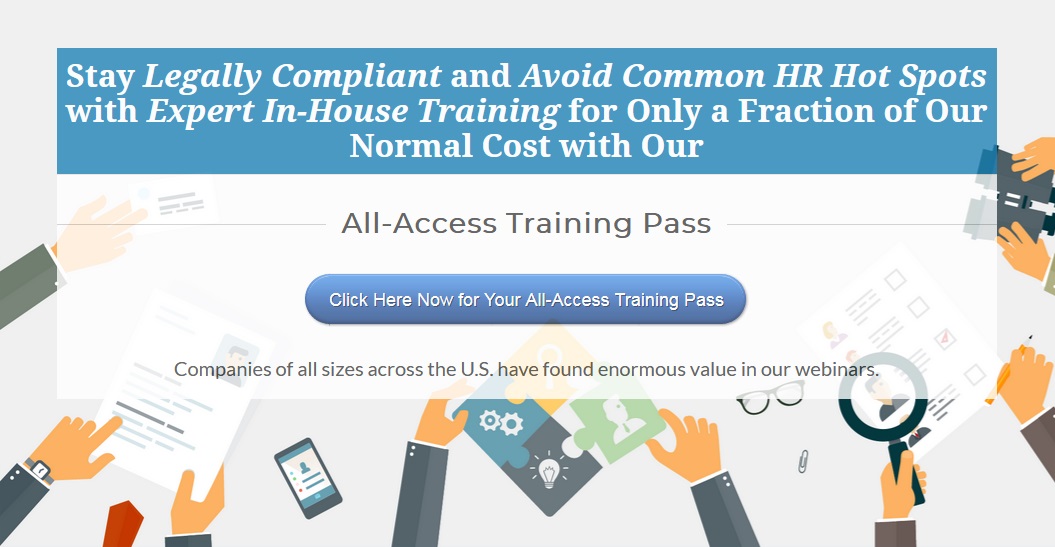Frequently asked questions answered by Amy herself:
Our new employee orientation is definitely a dumping ground for compliance and employment information. How can I get those departments to own their own education?
That is where the building-the-business case comes into play. You or the head of the department should understand what the orientation should really be about, and that the bigger picture is acculturating the employee into the company for long-term retention and engagement. That compliance is the exact opposite of that. It is disengaging and will aid in attrition.
Any suggestions for reinforcing to managers the importance of onboarding appropriately?
Stats are great and building the business case is great, but sometimes new employees just need to hear from employees themselves. That is why getting employee feedback is critical. If you can get the feedback (anonymously or not, depending on the comfort level) to show the impact of an unengaged or unsupportive manager in the process of onboarding, it goes a long way. It still takes executive support to hold the managers accountable to changing.
How do you suggest new employees give feedback on their onboarding if they may be uncomfortable talking one-on-one with their manager?
If that is the case, you should get HR involved. They may be more receptive to giving feedback that way. If that still isn’t the case, you can create anonymous surveys to get that feedback anonymously.
Do you have different recommendations specific for a very small company that does not have all these key people to help steer the new hire?
Small companies should still build out the key phases of the onboarding process in a structured way, but you can do so much faster. Your main focus should be on the structured experience that your new employee should be having, and making sure that it is consistent regardless of who you are. Ensure that it’s engaging and that you’re mapping out the emotional perceptual takeaway. Those still go a long way in successfully onboarding your new employees.
What automated systems for onboarding do you recommend?
My best recommendation is to look at your peer organizations, see what they’re using and do your own research that way. You don’t want to buy something overly complex or simple for your needs.
How do you deal with hiring managers with high expectations of the new hires? They have a very low tolerance for mistakes coming from a new hire.
If they are experiencing mistakes with their new hires, we first have to unpack why that is the case. Did we hire the wrong candidates? That means we should evaluate our recruitment process and make sure that the hiring manager is really involved in articulating their needs and they are hiring the right people. Maybe that is not the problem – maybe these are qualified candidates, but they have very high expectations of those persons ramping up quickly. If that is the case, we should process map out with the employee their experience and see what they envision changing, to help them have higher retention rates and help them do their jobs. If the people are experiencing errors or conducting errors, there has to be a reason behind it. Either way, it must be the hiring manager investigating this problem; it can’t be HR alone.
How do you approach career development conversations when we are a smaller organization and don’t really have those opportunities?
I think it is possible to have career development, even at small organizations. Informal programs can work by having informal, but intentional, conversations with employees about what they can achieve with the company. Small companies are in a great position to provide new employees with opportunity for growth because they have to wear multiple hats. It’s just that we aren’t having those conversations about those possibilities and opportunities. So if you flip it and use the small organization to your advantage and have those conversations, that will go a long way in providing the right career development that your employees want.
#7 on “10 Pitfalls to Avoid” mentions to stay away from relying on org charts for explaining lines of communication. What are the recommended alternatives?
Build case studies that illustrate unwritten rules of the business and behavior. For example, how do meetings take place at your particular company? Meetings at different companies are potentially completely different experiences. Unwritten lines of communication and behavior are things we have to warn people about so that they don’t put their foot into their mouth early by accident.
What are some good alternatives to only using PowerPoint for all of the day one information?
I’ve helped companies create Prezi presentations, which are more interactive, quick and dynamic. Also, build presentations so that they are short; you should never spend more than a few minutes on any presentation. Videos, Prezis and interactive games are great for getting people engaged in learning the information in a way that will help them retain the information at a much higher rate.
Test your knowledge!
 The use of this seal confirms that this activity has met HR Certification Institute’s® (HRCI®) criteria for recertification credit pre-approval.
The use of this seal confirms that this activity has met HR Certification Institute’s® (HRCI®) criteria for recertification credit pre-approval.
 Business Management Daily is recognized by SHRM to offer Professional Development Credits (PDCs) for SHRM-CP or SHRM-SCP.
Business Management Daily is recognized by SHRM to offer Professional Development Credits (PDCs) for SHRM-CP or SHRM-SCP.
